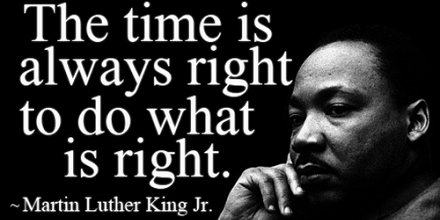
In Beloved, Toni Morrison taught us that in most circumstances, “definitions belong to the definers—not the defined.” To those who are defined— the ones who wear the lacerations and wounds of malicious words—language matters. Language matters because it represents the thinking that lies deep within the terms used. Words are important because they specify place, position, and power.
The Danger in LabelsPeople label others all the time. Labeling is a tool we use to help us grapple with difference and with our environment. Our labels can also influence what we see. The long-term consequences of labeling a child “smart” or “slow” can be profound. Labels that have to do with ability, class, race, or skill often shape the expectations of educators and can have lasting effects.
Although labeling isn’t always a cause for concern, and can at times be useful (It would be impossible to process information without the aid of labels like specific, pleasant, dishonest, and/or unsafe), it is important to remember that the people we label as black, white, sick, wealthy, poor, bright, and low, seem blacker, whiter, sicker, wealthier, poorer, brighter, and lower simply because we’ve labeled them so.
The Use of “People First” languageIt’s best to be cautious with labels and use them sparingly. Understanding their impact is necessary as we choose to promote an equitable learning environment where the needs of all students are met.
One way some folks have worked to neutralize the use of labels is by switching to people-first language. People-first language originated in the arena of disability studies, but can be applied to all groups of students and adults within school settings. The basic idea is to impose a sentence structure that names the person first and the condition (or label) second, for example “people with disabilities” rather than “disabled people”, in order to emphasize that “they are people first”. Because English syntax normally places adjectives before nouns, it becomes necessary to insert relative clauses, replacing, for example, an “asthmatic” with “a person who has asthma.” In schools, many of us have grown accustomed to using student labels such as the “SPED” kids, or the “ELLs”, the “behavior” kids, the “low” kids, the “high” kids, our “gifted” kids or even the “Tier 3” kids. Shifting to people-first language would put the students before the label and might even shift the ways in which we think about students in need of special supports (e.g., students receiving special education supports, students needing additional assistance).
Countering deficit-based languageAlthough people-first language may not fit every situation, it presents food for thought about the ways in which we talk about our students, and the labels we use to describe them. If we believe the way we speak shapes the way we think and vice-versa, this level of consciousness is necessary to ensure all students have a fair shake at the education they deserve.
Deficit-based language is language that creeps up on us; identifying perceived areas of weakness in students instead of areas of strength. As educators, we have a responsibility to disrupt and dismantle deficit-based language when we hear it used in relation to our profession, and most importantly our students. Many of the deficit-based narratives voiced in schools stem from notions that “different” is deficient, inferior, and/or substandard. Individuals using these narratives may see the knowledge and skills of students who are culturally diverse or differently abled as liabilities rather than assets. For example, a student may have significant skills at assembling things such as small machines. This student may be proficient at helping to repair the equipment his family uses around their house or for their grounds keeping business. However, this type of knowledge is not often seen as an asset, nor is it used as an anchor to make instructional connections in the classroom. The deficit narrative at play here is when the teacher grumbles about the student being ‘low’ and not capable of performing.
Another example might be the student who provides home and healthcare for an ailing family member. This student may regularly prepare meals, administer medication, even assist with communicating needs to a licensed healthcare professional; yet these skills do not necessarily translate directly to the academic skills taught in the classroom, and if the teacher doesn’t know the student well, it might be easy to overlook the talents that this student possesses. The deficit narrative that is dangerous for this student is the one in which the teacher comes to believe that this student doesn’t demonstrate effort at school and is at-risk of failing because she ‘just doesn’t care’.
The Time is Always Right To Do What’s RightWe can dismantle deficit-based narratives by reframing these narratives into positive statements about the strengths students possess. We can remind those using deficit language that there are circumstances and situations at play that we may not understand, and should not be held in disregard. Our outlook and approach makes a difference; and considering the assets and strong suits of students is much more powerful than considering perceived shortfalls.
Teachers and leaders have a responsibility to ensure all their students have first-class opportunities to learn. If the language we use reflects the cultural and linguistic practices and values of only one group of students, then the other students are denied an equitable opportunity to learn. If we don’t see the strengths of students who appear “different”, then we risk not helping them realize their full potential. The daily contact we have with students provides teachers and leaders a unique opportunity to either further the status quo or make a difference that will impact not only the academic and social lives of students, but their futures as well. We must recognize the power of the words, labels, and phrases we use; and use them wisely. By acquiring an equity vernacular, we can fulfill our responsibility to all our students.
Share this:





